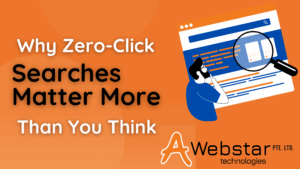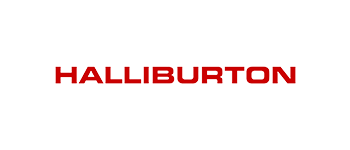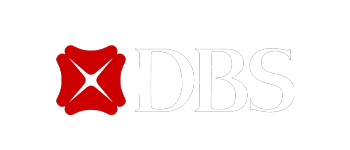
Now is the right time to work on the visuals of your brand! Assure that your visitors are starting your journey with your visual. Start learning how to make a logo is what we meant here! It is important to remember that you cannot create a logo casually. Designing a good logo requires a lot of preparation. Therefore, we suggest doing the preparatory work first, instead of blindly digging headlong into the development of a logo design, which you may regret later. The researchers have confirmed that logos are the easily recognizable brand identity, accounting for 75%, supported by visual style (60%), unique sound (25%), brand color (45%). The colored logo designs improve brand recognition by 80%. If this much information is not enough to convince you about logos’ importance then, read this article further! It is a graphic representation of the brand – usually a drawn name and a symbolic picture. The logo is used on the website, in social networks, on business cards and promotional materials, billboards, leaflets, company souvenirs, etc. In a word, on any media, and in any brand advertisement. That is to say, a logo is part of the corporate identity of the company. The division of the logos is into four main types: Remember, the simpler the better!. Your logo will be used in the identity – every visual manifestation of the brand. For example, on business cards, letterheads, reports, invitations, advertisements, and more. Having a logo is a must for businesses of any size. Even your home business can benefit from your brand identity. Even for those who are not design-savvy, it is important to know how to create a logo. Especially on a tight budget, when starting a new business or rebranding. The main purpose of your logo is to connect your digital and physical manifestation with visuals. It is a way to get to know you in any direction where your business is being implemented. This is, of course, true. Ideally, a company logo should be completely unique. In practice, however, there is no guarantee of this. Does this mean considering plagiarism? No! In this case, if they talk about the non-unique logo, they mean the so-called “similarity to the point of confusion.” That is, there is such a similarity between the two logos, which can mislead the consumer that they are the same brand. It is important to understand that the term “confusing similarity” is about the registered and already registered trademarks in the same class of goods and services (related fields of activity). Yes, everyone wants their logo, be it seen once, to be forever engrained in the minds of visitors. Usually, the same Apple, Nike, Coca-Cola act as the standards of the logos remembered. But would they become so recognizable if you did not show them to us for decades from each “iron”? A priori, only something that goes beyond the framework can be remembered, but this can not always play into the hands of the brand. Logo design in certain areas is sometimes by tradition or market leaders. Therefore, the vast majority of funeral agencies have black logos, while IT companies have sans-serif fonts. But here the truth is much less than in the previous paragraphs. A logo is rarely seen apart from its wearer. But on this medium, right next to the logo, you can always tell in more detail about the field of activity. Wouldn’t someone who went to the website of an online clothing store, pile installer, or lawyer know what they were doing? Will a potential client forget why he just came to this site? I think no. And even if he forgot, the content of the page will tell him about it. Therefore, these logos do not need hangers, piles, or judge hammers. The tire changers, hairdressers, fast food retailers need such types of logos. These are – those areas where a potential client can suddenly come from the street The one who right now needs to “change shoes”, get a haircut, or eat. Such clients, perhaps, need to be told as quickly and clearly as possible about what you are doing. Although this can be done with banners and posters, not a logo. But here, too, there is a double-edged sword. There is nothing wrong with a hint of a sphere in itself. But it is important to understand how much the images are hackneyed in this industry – here the question is not in the usual “banality”, but in the fact that the logo does not get lost among others like it. Usually, this principle of creating a “correct” logo is for the sake of the fact that simple forms: The latter means that a simple logo is faster to see and recognize than a complex one. It is especially important in our modern world, always in a hurry somewhere. But this criterion does not fit absolutely for all brands. Some logos are not there on the run, and some hardly need to be engraved. Again, standing out from the crowd will play here. That is why there are now so many illustrative, photorealistic logos with a lot of detail. If you decide to create a text or combination logo for the brand, you should also choose a beautiful font. It is desirable that it be original, but you can also use the free options available on the network. In general, fonts are different – simple, with and without serifs, handwritten, decorative, etc. Serifs are the best way to grab and hold attention. Non-standard versions of the text with different letter sizes can tell about the originality of the company. Some fonts used in logos are similar in format to products. Although decorative or handwritten text looks nice, it is often difficult to read, which is why many companies try to make emblems with simple types. “Maximum 3” is a frequent addition to the heading above. You can also add the obligatory absence of gradients here. You read so far that you probably already understood why this point is as generalized as the previous ones, right? However, as you must have noticed, there are 5 colors in the Microsoft logo! Google and eBay have 4 each, while NBC has 7! What about Instagram and Firefox? Aren’t gradients in logos for the 90s? Perhaps the fact is that the more colors in the logo, the more difficult it is to bring it to a monochrome (one-color) appearance. And, this is the type of logo that makes seals, engraving, burning, etc. Well, everything is quite easy here. A logo does not have to look good or equally good on any medium and in any size. The logo should look good on its primary media, in its primary dimensions. For everything else, there are additional versions of the logo. Many brands have long been using alternative logos for various occasions. And, in fact, any logo can be adaptive, no matter what fashion trend (or not fashionable) it fits. There is some kind of history behind many well-known and not-so-famous logos. Sometimes in the logo part of this story reflects, sometimes not. And there is nothing wrong with the latter. Each of the multi-colored squares symbolizes one of the main products of the company: blue for Windows, red for Microsoft Office, green for the Xbox game console, and yellow for the Bing search engine. And all the squares together still refer us to outdate the Windows logo, in which each glass gets painting in its color. The main potential success of a logo design with a hidden meaning (yes, the success of a logo ) lies in the fact that it will appear in the next collection. A logo is not a puzzle. Yes, it sometimes carries a lot of meanings. Even so, it should be immediately recognized and memorize as easily as possible. It is desirable that even with a strong reduction, the general image and some important details are clearly visible. In no case should a company or product mark resemble what competitors are using? And non-unique signs are many times harder for potential clients to remember. It is not recommended to insert any elements related to a specific time into the logo. Especially if you plan to stay on the market for at least 10 years. Yes, there are times when large perennial brands change their logos, but this comes with a lot of costs. And if the changes do not bring originality or change the meaning of the logo to the opposite, then clients will not be able to recognize it. It is important that the developed logo looks harmonious both on the Internet and in the printing industry. To do this, you need to look at how the sign looks in a reduced and enlarged form, as well as in black and white. It shouldn’t always be used. But thanks to this quality, buyers form a clearer image associated with the specific goals and qualities of the company. And it must match what you want to broadcast to the public. For example, there are associations with lines and shapes. The horizontal lines symbolize peace and tranquility, and vertical lines symbolize strength and endurance. The square is associated with strength and constancy, the triangle with knowledge and sometimes leadership, curved lines with adaptability. The round sign means mutual understanding, unity, and the ring means strength and determination. First, the future logo is drawn by hand or in special programs. The designer creates several options for sketches, plays with fonts, offers several options for pictures. Yes, the customer will have to give the designer a minimum specification, without which, as you know, the result will be unpredictable. Accordingly, the client must at least roughly imagine what he wants. It needs to reflect the main wishes, the specifics of the company, the target audience, the brand’s mission, and other details. Logos are rarely approved the first time. At the stage of approval, the customer evaluates the sketches, makes corrections, offers wishes and comments. A designer fixes bugs or removes sketches from scratch – that’s how lucky you are. The customer again looks at the result of the work and gives the go-ahead for further actions. It is clear that there can be many more stages of approval. In order not to delay the process and not to wag your nerves, we recommend checking with the Terms of Reference. The designer creates a logo in special programs. Conducts a test drive – a printout of the logo to see how the image will look on different media. The performer usually creates several options – in different formats and different sizes (horizontal, vertical, larger, smaller). All these options are sent to the customer for final approval. The logo is an important part of your brand. The company’s brand has two intersecting paths: history, values , and identity, intertwined with a visual representation of all conceptual aspects. A logo has the visual ability to tell the story of your business. The only thing is that it cannot tell the whole story at all. Your logo should both represent your brand and generate interest for future engagement. However, it’s important to remember that your brand isn’t just your logo. Basically, this means you shouldn’t rely solely on a logo to represent your brand. As important as it is, this visual sign is only part of the big picture. With that said, it’s time to start working on the logo. In order not to “sit in a puddle” when developing a brand name, study and rethink the logos that you see every day. Remember, your logo should be easy to remember and reflect your company’s key message. Awebstar is a leading Logo Designing Company in Singapore. The designers here use amazing UI and UX designs and responsive design methods. Increasing your brand value is our only motto. Allow us to design a perfect logo for your brand. Share your views in the comment section below. Any query or suggestion is welcome. Thanks for reading!
What is a Logo?
Why do you Need a Logo at all?
What Should be the Logo? Basic Rules
The Logo must be UniqueThe Logo Must be Memorable
The Field of Activity Should be Clear From the Logo
Keep your Logo Simple
Choose the Right Logo Font
The Logo Should have a Minimum of Colors
The Logo Should Look Good on Anything from a Pencil to Billboard
There Must be a Hidden Meaning in the Logo
Signs of a Good Logo Design
Simplicity
Uniqueness
Relevance
Versatility
Associativity
How is a Logo Made?
Training
Coordination with the Customer
Making Edits
Secondary Approval
Creation of a Logo
A Logo is not a Brand
Conclusion















































